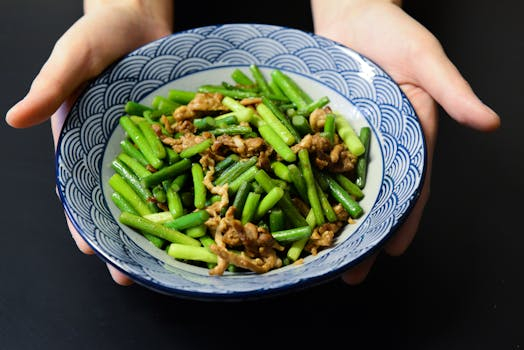Heirloom Vegetables: Rediscovering Forgotten Flavors from Our Ancestors
When it comes to food, there is nothing quite like the flavors of our childhood and our ancestors’ time. These flavors have a special place in our memories and hearts, conjuring up images of family gatherings and shared meals that bring us closer together. However, with the rise of industrialized agriculture, many traditional fruits and vegetables have been pushed to the sidelines, favoring quick-growing, mass-produced crops. But there is a movement to revive these forgotten flavors and bring them back to our plates – heirloom vegetables.
The History of Heirloom Vegetables
Heirloom vegetables are varieties that have been grown for many generations, passed down through the years and cultivated for their unique flavors and characteristics. They are typically open-pollinated, meaning they are pollinated naturally through wind, insects, or birds, rather than through human intervention.
Unlike modern hybrid varieties, which are bred for uniformity and shelf-life, heirloom vegetables are prized for their individuality and diversity. Many of these varieties have been around for hundreds of years, with some dating back to ancient civilizations.
The Rise and Fall of Heirloom Vegetables
Before industrial agriculture became prevalent, people relied on heirloom vegetables for their sustenance. These crops were an integral part of their diet and culture, with farmers saving and sharing seeds from their best-performing plants to ensure a good harvest the following year. However, with the advent of hybrid seeds and chemical fertilizers, heirloom vegetables were slowly replaced by more commercially viable options.
As a result, many heirloom vegetable varieties went extinct, disappearing from seed catalogs and grocery stores. But thanks to a growing interest in organic and locally sourced foods, these forgotten flavors are making a comeback.
Why Rediscover Heirloom Vegetables?
Aside from their unique flavors and rich history, there are many reasons to consider incorporating heirloom vegetables into your diet. Here are a few reasons why you should rediscover these forgotten flavors:
Better For Your Health
Heirloom vegetables are generally grown using organic farming practices, meaning they are free from harmful chemicals and pesticides. Plus, these varieties are often more nutrient-dense compared to their modern counterparts.
For example, heirloom tomatoes have been found to contain higher levels of antioxidants and flavor-enhancing compounds, such as lycopene and beta-carotene. Studies also show that heirloom vegetables have a more diverse and beneficial microbial community, which can have positive effects on our gut health.
Supporting Biodiversity
The cultivation and consumption of heirloom vegetables are crucial in preserving agricultural biodiversity. By growing a wide range of vegetable varieties, farmers can help maintain a diverse genetic pool, making our food system more resilient against diseases, pests, and climate change.
Furthermore, heirloom vegetables provide a habitat for a range of beneficial insects and pollinators, contributing to the overall health of our environment.
Preserving Cultural Heritage
Many heirloom vegetable varieties are tied to specific cultures and regions, reflecting the diversity and history of these communities. By cultivating and eating these vegetables, we can keep these traditions alive and honor the knowledge and hard work of our ancestors.
How to Incorporate Heirloom Vegetables into Your Diet
Now that you understand the significance of heirloom vegetables, you may be wondering how to start incorporating them into your diet. Here are a few tips:
Shop at Farmers’ Markets or Join a CSA
One of the best ways to access heirloom vegetables is by purchasing them directly from local farmers. Visit your nearest farmers’ market or consider joining a Community Supported Agriculture (CSA) program, where you can receive a weekly box of fresh, locally grown produce.
Grow Your Own
If you have a green thumb, why not try growing your own heirloom vegetables? Many seed companies now offer a wide selection of heirloom seeds that you can sow in your garden or even on your balcony. Plus, there is nothing quite like the satisfaction of eating a vegetable that you have grown yourself.
Cook and Preserve
Heirloom vegetables may look different and have unique flavors compared to what you are used to, but don’t let that intimidate you. Experiment with different cooking methods and recipes to fully appreciate their taste and texture. You can also preserve these vegetables through canning, freezing, or pickling, so you can enjoy their flavors all year round.
A Future for Heirloom Vegetables
As our society continues to prioritize convenience and mass production, it is essential to keep traditional and heirloom varieties in our food system. By rediscovering these forgotten flavors and supporting farmers who grow them, we can ensure a future where our plates are filled with diversity and connection to our past.
So, the next time you are at the grocery store or your neighborhood farmers’ market, keep an eye out for heirloom vegetables and give them a try. You may be surprised and delighted by the flavors of our ancestors.











